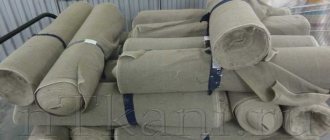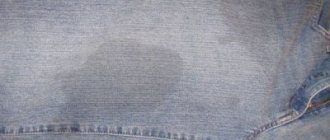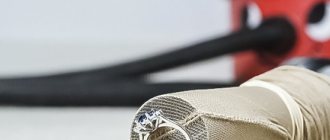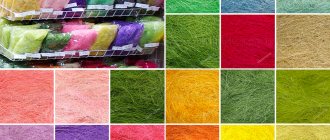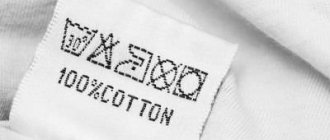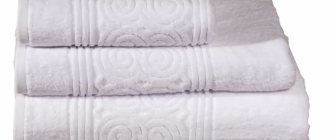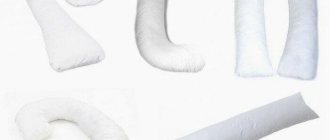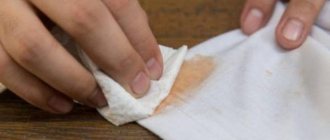Starched linens, lace, napkins, tablecloths and clothing details look great. To give things this look, it is not necessary to use homemade methods and dilute starch when there are modern means for starching laundry. Professional and environmentally friendly household chemicals are simple and easy to use. The procedure does not take much time; it becomes possible to process only individual areas of clothing. The products ultimately hold their shape well, acquire freshness and a subtle scent. Another advantage is that when ironing, the soleplate of the iron remains clean because the fabric does not stick.
Starching will help give a neat look to linen and cotton items, chiffon and organza, white lace, openwork curtains, shirts, wedding dresses and napkins. The procedure is contraindicated for synthetics, underwear and dark clothes. They will simply be damaged, lose their properties and appearance, and will need repeated washing to restore them.
Types of chemicals for starching:
- liquids that are added during washing;
- sprays and aerosols for use when ironing.
Why starch things
When ironing linen treated with a special substance, a thin, transparent and even film is formed on the surface of the textile. It performs protective, strengthening and decorative functions:
- the structure of the material becomes denser and holds its shape, creasing is prevented;
- most of the contaminants that get on the fabric will be washed off along with the strengthening agent, and will not be ingrained into the threads;
- an environmentally friendly barrier is created that does not irritate the skin, but as soon as water gets on the starched area, it disappears.
Important: there are products with a whitening effect. When purchasing, make sure there is a corresponding mark.
This procedure is performed on bed linen, bathrobes, and shirts. But not everything can be processed.
Peculiarities
Not all things can be subjected to such processing. Starch is used to give a neat look to cotton and linen items, veils, white lace and guipure items, chiffon and organza.
You should starch your clothes once and repeat the procedure after 5 washes. It is not necessary to do this after every wash of the product.
It is not recommended to use starch for:
- underwear;
- dark things;
- synthetics.
In this case, the desired effect will not be achieved, and the processed item will be damaged. For example, underwear will lose its hygroscopicity, and dark items will have streaks (they are difficult to remove, only the next wash will help).
What things is it suitable for?
The product used for starching plays an important role in this matter. You should be careful with industrial compounds and first study the instructions. Some manufacturers do not recommend use on synthetics.
The procedure is suitable for tablecloths, tulle, curtains, napkins and shirts that have cuffs and collars. Don't forget about bed linen. After all, this is a separate kind of pleasure - sleeping on a boiling white bed, “crispy” from cleanliness. A wedding dress is often treated in this way at home, making the bride’s outfit even more perfect.
Use is allowed not only on white, but also on colored fabrics made from natural materials or synthetics. You just need to remember about the individual approach. The amount of product is selected depending on the hardness of the water, the type of material and the processing method.
What you can't starch
To avoid unforeseen situations and not spoil the item, it is enough to know some of the nuances associated with the procedure.
The following things should not be starched:
- Underwear. Due to the fact that the resulting film does not allow air to pass through well, it is unhygienic to cover clothing with it in close contact with the body. This will have a negative impact on the fabric and skin. Redness, irritation and itching may occur. Especially in the summer.
- Dark things. White stains will remain that will have to be washed off, which makes the procedure pointless.
This is interesting: it is not forbidden to starch synthetics. But if the combined material acquires the desired properties, then completely artificial fibers will react poorly to the influence of the strengthening agent.
Why is this worth doing?
Since this method has been practically forgotten by modern housewives, having heard about the procedure performed by a friend, they are faced with the question: “Why starch clothes?”
For most women, the need to resort to starching underwear is a relic of the past.
This clothing processing process has the following advantages:
- the use of starching agents makes things elastic;
- the product wrinkles less;
- at the end of the day it remains in the same form as it was in the morning;
- things are ensured cleanliness, dust and small specks do not cling to them;
- starch linen to make it more durable;
- This method is also ideal if you need to bleach the product and give freshness to the texture of the material.
On things treated in this way, a kind of layer is formed that prevents moisture from penetrating into the fibers of the material.
After applying starch, drying clothes and using an iron, this product turns into dextrin. It is this that forms a shiny crust that improves the appearance of the product.
What is this method used for? This method of processing the material is necessary to give things a neat appearance. It is especially valued by ambassadors, directors, deputies and other individuals holding high positions.
They have to wear white shirts all day, and to keep them from getting too dirty, they use starch.
How to make your own mixture
It is well known that fabric differs in structure, thickness and other properties. Based on this, clothes need to be starched in different ways, taking into account the characteristics of the selected textile.
Processing options: table
| View | What is it suitable for? | Recipe |
| Soft | Bed linen, curtains and thin fabrics (cambric, tulle, chiffon). | Dilute 1 tsp in 1 liter of water. starch. Stir until the lumps disappear. |
| Average | Shirts, tablecloths, lace items, bows, napkins, robes. | The amount of substance for the same volume of liquid is greater - 1 tbsp. |
| Hard | Collars, cuffs and other parts that need a stable shape. It is not recommended to completely cover the item with such a thick film. | For 1 liter of water you will need 2 tbsp. starch. Dissolve until smooth. Dilute 1 tsp in a small amount of hot liquid. and add to the solution. Mix thoroughly until a homogeneous consistency is obtained. Let it brew for 2 hours. |
Tip: you can use not only potato starch, but also corn, rice or wheat starch. The product obtained from tubers is especially popular because it thickens well.
Reviews
Marina
I have to constantly starch tutus because my daughter takes ballet classes. If I don’t have a special German remedy in a “Superform” spray on hand, then I use my grandmother’s methods. For the composition, I use only potato starch, although I heard that you can use rice and corn starch.
Tatiana
Once I starched a dark dress. It was my mistake, after which the item deteriorated, unpleasant stains appeared, which could no longer be removed. Now I use the recipe with gelatin. The composition is prepared quickly. The item holds its shape well after this, but it needs to be dried, as in the traditional method - on hangers.
Julia
I don’t starch dresses, but I am happy to carry out this procedure with knitted items. I make beautiful vases from napkins. The main thing is to give the product the desired shape in time. I just place the napkin on the bottle or vase and wait for it to dry. As a result, I get a beautiful vase.
Professional products: sprays, liquids and powders
In addition to the well-known grandmother’s method, there is a more modern, simpler and less energy-consuming method. Among household chemicals, starch products have long appeared. A wide range allows you to choose the most convenient option.
Advantages:
- They are available in the form of an ironing spray, liquid or powder, which allows you to choose the form of the product that is convenient for you and which will be easier to work with.
- Convenient and easy to use.
- Starch spray is applied to individual parts of clothing, which greatly facilitates the process. It is enough to use it while ironing.
- For processing large canvases, a bulk product is better suited. It is simply added to the machine during washing.
Important: regardless of the type of drug, before using it, you must study the instructions and follow safety precautions. Ironing spray that gets on your skin can cause irritation.
The best products for starching laundry
- Luxus Professional Superform - spray is sprayed onto clothes during ironing. Comfortable and easily contacts the iron coating. It evens out dry and wrinkled laundry. Ideal for emergency creation of a flawless image. German product, costs about 350-400 rubles. The composition contains a highly purified natural product.
- "Domol" from Germany - starch for ironing in aerosols. Suitable for people with sensitive skin. It makes ironing effortless. Cannot be used on dark things - light stains will remain. Price - from 480 to 550 rubles.
- Cotico is a liquid product for starching laundry of any material. Can be used for hand or machine wash. It is produced in the Russian Federation and costs approximately 270-700 rubles, depending on the packaging capacity. It prevents the product from becoming too wrinkled even during wet cleaning and provides a pleasant aroma of freshness.
Sprays for starching things are more popular than other professional products due to their local application. Nowadays, few people process bed linen, curtains or tablecloths. Increasingly, this procedure concerns only elements of clothing that should have a representative appearance.
Alternative Methods
Among the folk methods of starching, there are recipes that use other substances. They are available in every home and give almost the same effect.
Sugar
This starch agent is used primarily on napkins or lace. Not recommended for use on everyday clothing.
Cooking method:
- Heat 100 ml of water in a small saucepan until warm.
- Dilute 200 g of sugar in it.
- Continue heating over low heat, stirring constantly.
- As soon as the solution begins to boil, remove the container from the stove and allow to cool.
The disadvantages of this substance include its rapid dissolution and the appearance of a sticky coating after getting wet. Outdoors, the “candied” fabric attracts insects.
Important: overcooked syrup acquires a yellow tint, which can negatively affect the color of the material.
Milk
It is used primarily for fixing the shape of openwork napkins.
Cooking method:
- Mix 200 ml of milk and 0.5 tbsp. rice starch.
- Boil another 300 ml of milk and pour in the mixture obtained earlier.
- Let cool.
- Immerse the product in the solution for 20 minutes. Remove, squeeze by hand and lay out to dry.
Gelatin
Great for processing knitted, silk and dark items. Does not leave light streaks. It is better not to use this product for starching laundry. A large amount of the basic substance will be needed, and during sleep the bed may begin to stick, heated by human heat.
Cooking method:
- Add 1 tbsp. granular substance in 1/2 cup of water. Leave to swell. While waiting, stir several times with a spoon.
- Fill the container to the brim with water, wait until the grains swell and become soft.
- Transfer the resulting mixture to a small saucepan and heat over low heat until the gelatin is completely dissolved. Don't let it boil. Apply when it has cooled down a bit.
This product does not have a bleaching effect, so the item being treated must already be cleaned and bleached, if necessary.
PVA glue
To starch woolen items, knitted flowers, openwork and knitwear, you can use glue diluted with water in a ratio of 1:2. Before applying, you should place a film or thick paper under the item.
For silk and organza use silicate glue: dilute 1 tsp. for 5 liters of water. For 200 ml of liquid, 1 drop of the main substance is enough.
Instructions for different wardrobe items
Products can be starched entirely or individual parts. It all depends on the type of clothing or linen.
Shirt and collar
Usually a soft or semi-hard method is used. The choice depends on personal preference and type of fabric:
- fine linen, cotton, gauze: medium starch;
- cambric, cotton voile, chiffon: soft.
Entire items are rarely starched; more often they are limited to processing cuffs, collars, and plastrons. Or a combined method is used: the front, back, and sleeves are treated with a medium or soft solution. The cuffs and collar are starched with a paste of maximum rigidity.
How to starch a shirt with different solutions:
- Prepare two types of starch: medium and strong concentration.
- Soak the entire shirt in a less saturated liquid. Hold for 10-15 minutes.
- Dip cuffs and/or collar into a container with highly concentrated starch.
- Wring out the finished shirt and hang it to dry, straightening out the folds.
In addition to home remedies, you can starch clothes with a special spray. To do this, shake the can and treat the item immediately before ironing. Spray from a distance of 20 cm from the fabric.
Dresses and skirts
Clothes must first be washed, and if they are clean, they must be well moistened.
How to starch a skirt or dress:
- Prepare a solution in the required concentration.
- Pour into a bowl of water, stir.
- Immerse the washed skirt or dress in the starch solution, being careful not to wrinkle it.
- Leave for 10-20 minutes (depending on the density of the material).
- Remove from the solution, straighten, hang to dry.
Ribbons and bows
Hair accessories and gymnastics ribbons are made from delicate fabrics. To add rigidity, a starch solution of medium or soft concentration is used. It must be poured into a basin or bowl, and the product should be lowered into it. Starch for 20 minutes, then place the accessory on a flat surface, smooth out the folds with your hands, and leave to dry.
Advice! It is better to soak things in starch while they are wet. Then the solution will be distributed more evenly.
Caps and robes
The medical uniform and work clothes of the cook should always be immaculate, and for this, things need to be properly starched:
- Prepare a paste of medium or hard concentration.
- Soak things for 10-20 minutes.
- Dry the robe on a hanger, dry the cap on a jar of the appropriate size.
Tablecloths and linen
It is better to starch tableware and bedding by machine. Moreover, you need to use special means, the packaging of which contains permission for the machine. Starch is added at the final rinse stage in the dosage specified by the manufacturer.
Important! Homemade recipes are not recommended, as the substances can damage machine parts.
Rules for starching laundry at home
Depending on the thing that needs to be processed, the method is chosen. To shape cuffs, a collar or a petticoat, the dry method is sufficient. Starching a small wardrobe item or delicate item is done by hand, but curtains and bed linen can easily survive the procedure with a washing machine.
Dry
- To use the purchased starch spray, no special manipulations are required. It is enough to apply it to the fabric during ironing.
- The second method forces you to place paper under the item. Using an iron or spray bottle, spray the laid out clothes with water and then sprinkle with a thin layer of dry potato starch. Place another sheet on top and smooth it out. After the procedure, remove barriers and shake off any remaining powder.
Manually
- Wash the item as usual.
- Immerse the product completely or partially in the solution prepared in advance for 15-30 minutes.
- Take out the clothes and squeeze lightly to remove excess liquid.
- Dry at room temperature. If this is clothing, then it must be on hangers, in a suspended state.
In the washing machine
For washing in the unit, as a rule, they use a special powder or a liquid analogue, and not a homemade paste. An industrial preparation will evenly cover the entire thing, but a homemade solution will not give the same result.
When performing the procedure for the first time, it is better to experiment with a small piece of tissue. Usually folk or professional remedies are tested on handkerchiefs. In the future, you need to perform processing in the correct sequence and no difficulties will arise, and the effect will be as in the photo.
Tips for special occasions
Typically, starching bed linen and clothes for everyday wear does not cause problems. However, when it comes to a wedding dress or a snow-white children's suit, certain difficulties may arise. There are a couple of recommendations that will get rid of problems.
- If the top of the wedding dress has a corset without lantern sleeves, it does not need to be touched. Carry out the procedure only with a skirt; it is treated with a saturated solution. After drying, put gauze on the skirt and iron it. An original solution would be to starch not the entire skirt, but its different layers, for example, one at a time.
- A children's holiday suit can be starched in the same way as a wedding attire. However, here you need to pay special attention to the top, especially the decorations, which quickly lose their shape. You can soak the suit as a whole or individually (its individual parts).
- Collars with cuffs are treated with a hard solution. This composition requires longer cooling. The treatment is carried out pointwise - only the cuffs and collar need to be placed in the solution.
